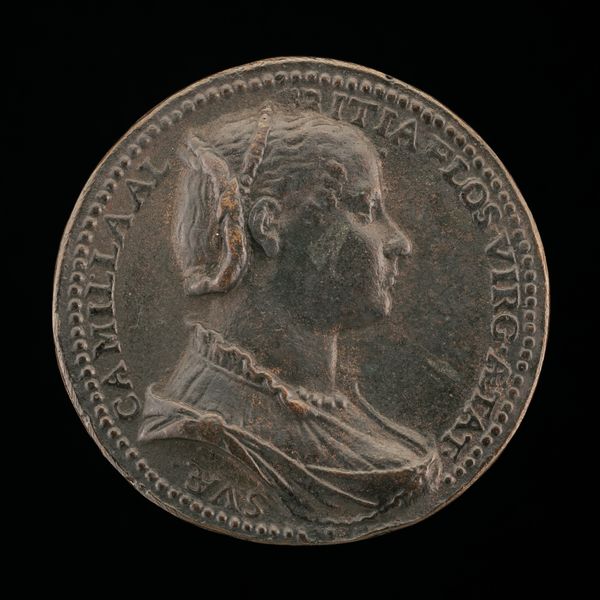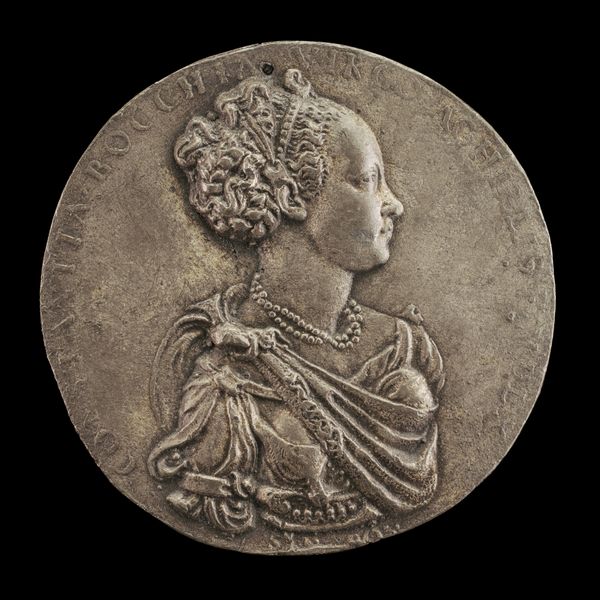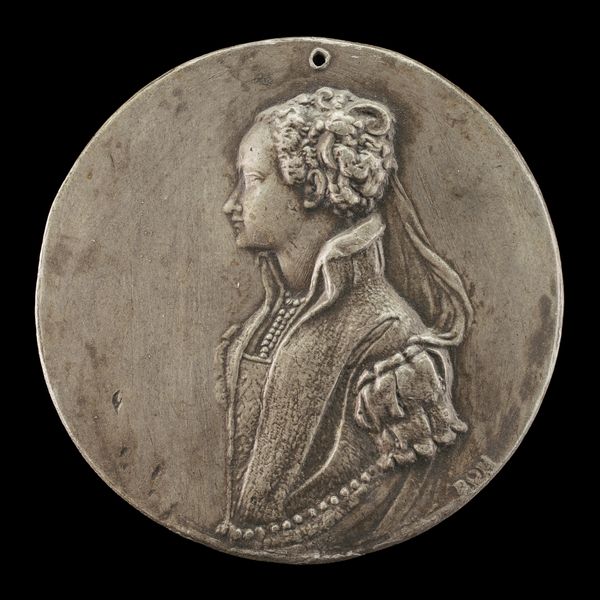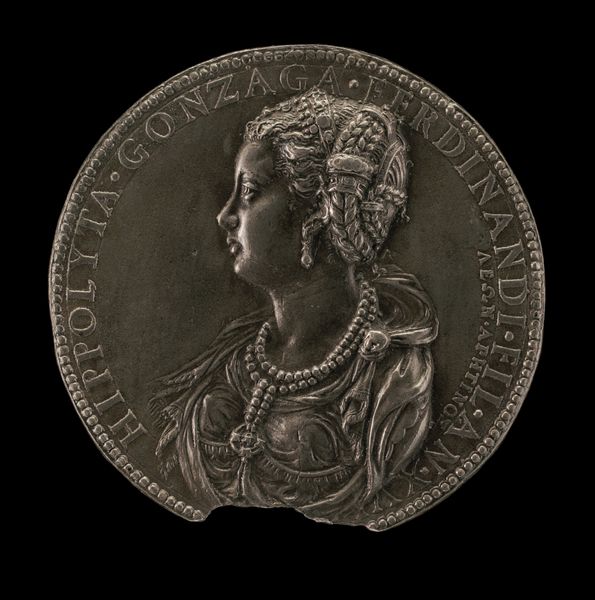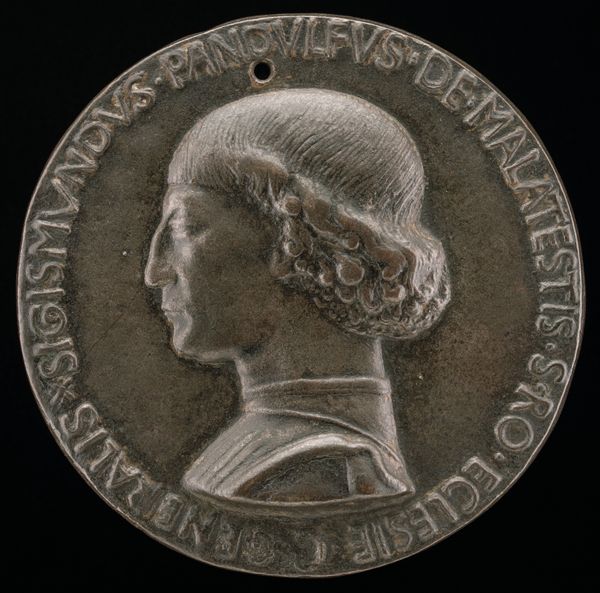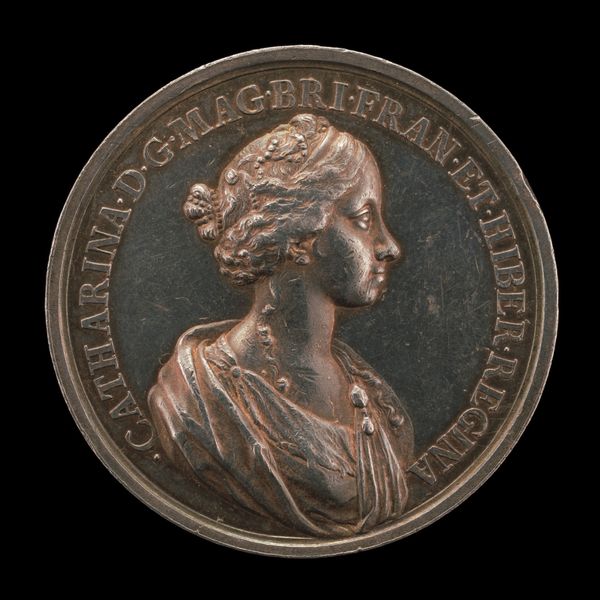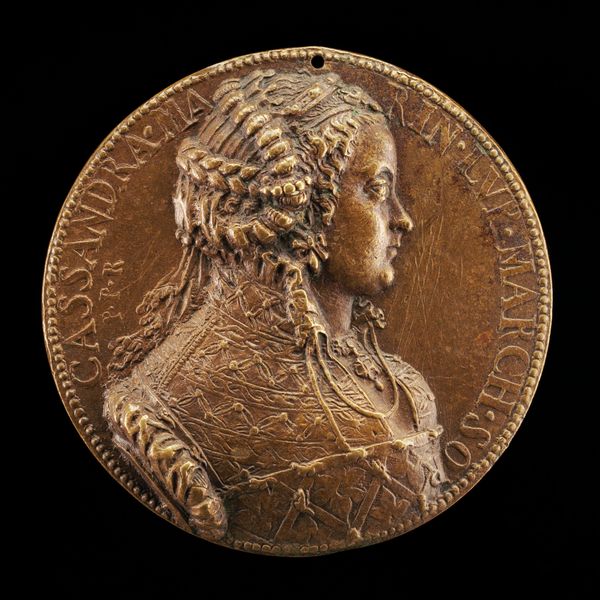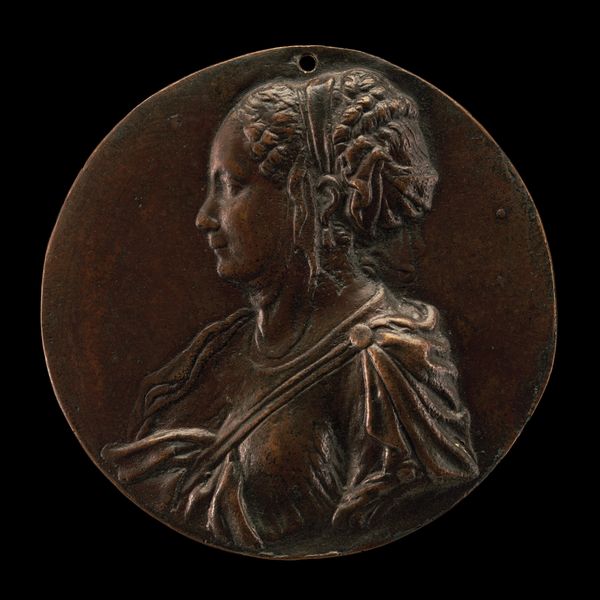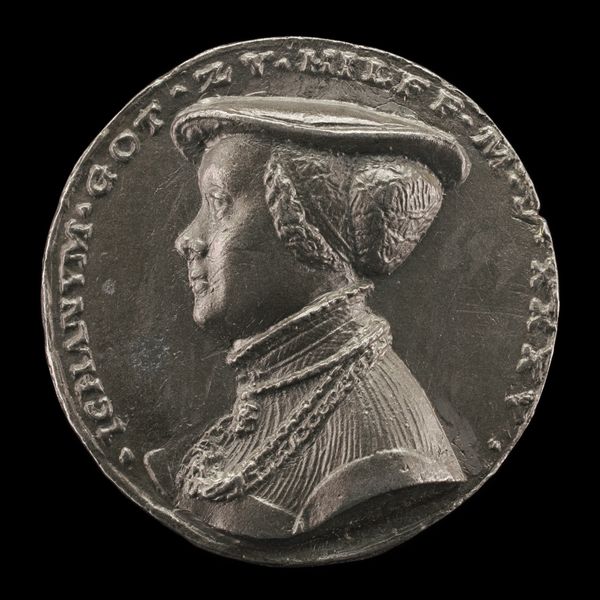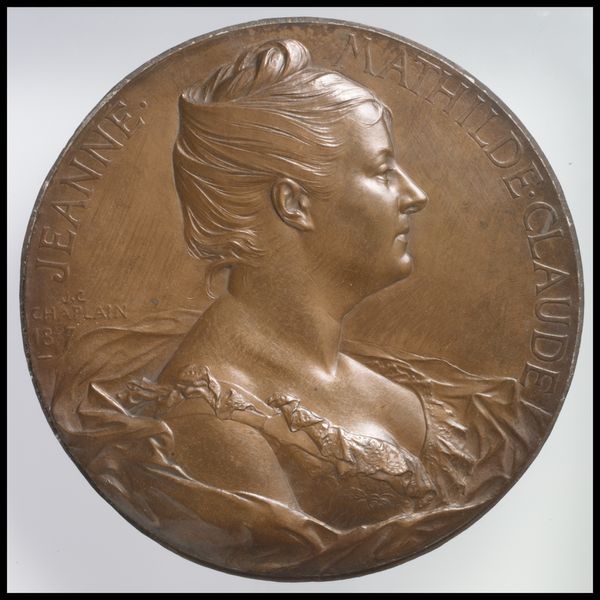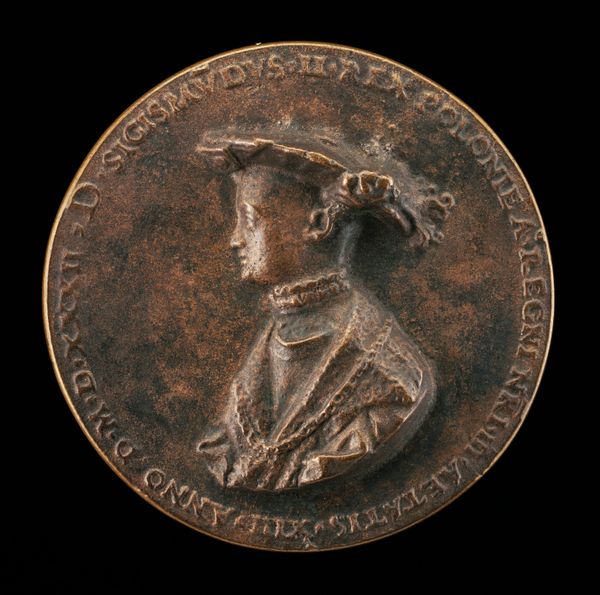
Margaret von Firmian, 1509-1536, Wife of Caspar von Frundsberg 1529
0:00
0:00
metal, oil-paint, bronze, sculpture
#
portrait
#
medal
#
3d sculpting
#
metal
#
oil-paint
#
sculpture
#
bronze
#
11_renaissance
#
sculpture
Dimensions: overall (diameter): 6.14 cm (2 7/16 in.) gross weight: 60.1 gr (0.132 lb.)
Copyright: National Gallery of Art: CC0 1.0
Curator: This is a portrait medal, “Margaret von Firmian, 1509-1536, Wife of Caspar von Frundsberg," created in 1529 by Friedrich Hagenauer. The medium is bronze, rendered in profile, which was typical for portrait medals of this era. Editor: My first impression is the austerity. The sitter's features appear so precise yet reserved in expression. Is that elaborate hat meant to distract from a hidden emotional state? Curator: It speaks to the conventions of Renaissance portraiture and the patronage system. Medals like this were often commissioned by the wealthy to commemorate significant life events or solidify their status. Consider Margaret's position as a woman in a patriarchal society. This medal would've publicly affirmed her connection to the prominent Frundsberg family. It reflects how imagery functioned to negotiate power and influence within rigid social structures. Editor: It’s difficult to view this object without immediately interrogating the male gaze inherent in the tradition of portraiture and particularly this commission. To what extent does this represent Margaret's selfhood, or instead perpetuate a constrained, gendered performance expected of women? The medal itself serves as a confining frame. Curator: And how do we consider it today? As a historical artifact, it offers insight into dress codes and societal roles. These medals circulated; they functioned within early-modern visual culture, conveying messages about power, status and marital alliances. The inscription provides clues to these family connections. Editor: Right. We must ask ourselves, whose history are we seeing represented, and what ideologies were embedded into its production and continued circulation? The inscription creates its own sort of narrative or the subject as an object. Was Margaret a political pawn for alliance in her time? Was the artistic patronage of male leaders only self-serving? What space for autonomy was offered in those artistic collaborations? The detail around the neck is curious with beads which stand out so. Curator: I agree. Even something like the beads and her attire speaks to the material culture of the time, allowing us a tangible connection to a woman living in the Renaissance. Editor: It is intriguing to ponder all the socio-political forces intersecting here, visible within this small, yet historically charged artwork. Curator: A worthy thought! I hope visitors leave here feeling informed and maybe a little reflective of it all.
Comments
No comments
Be the first to comment and join the conversation on the ultimate creative platform.

